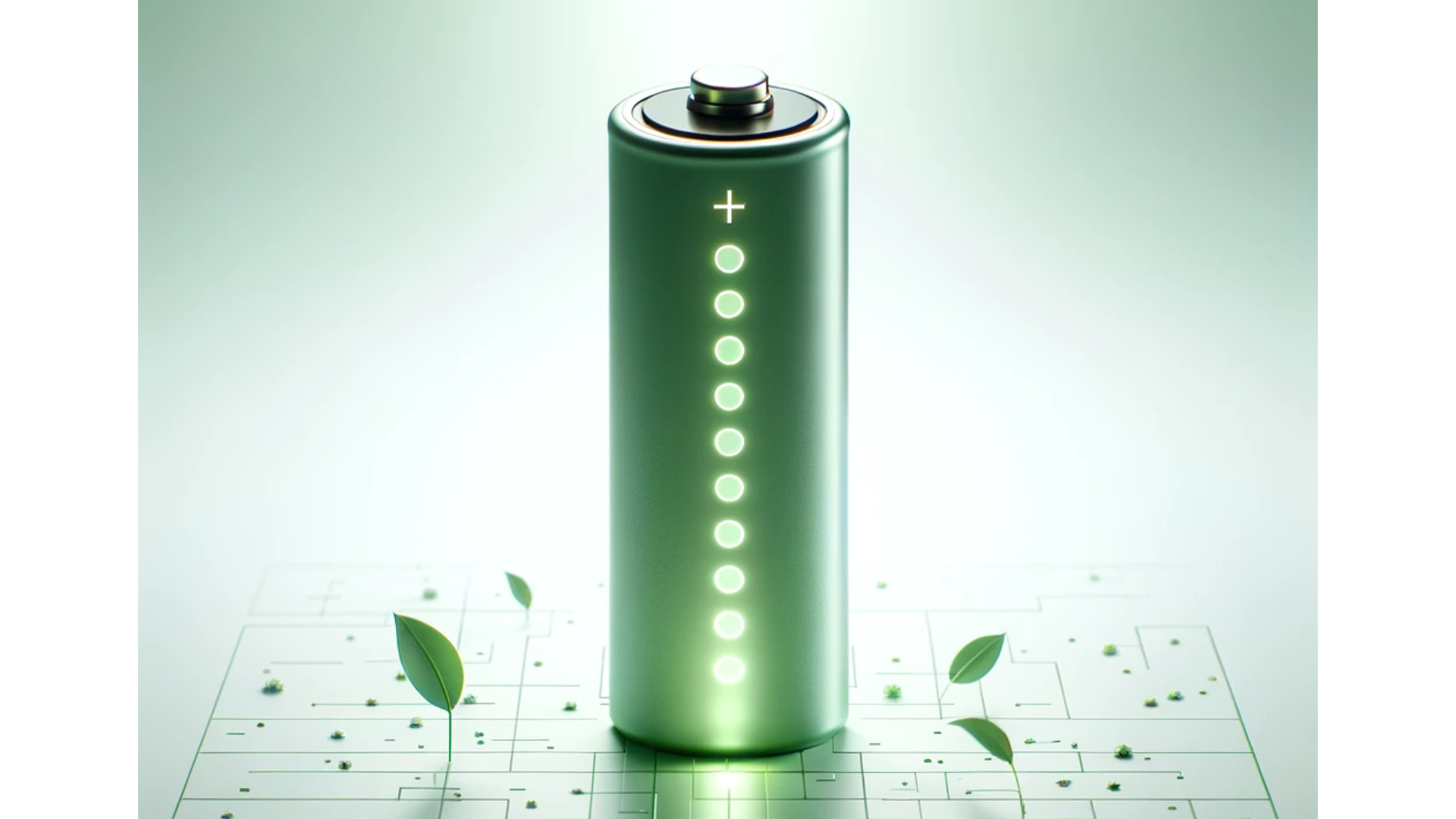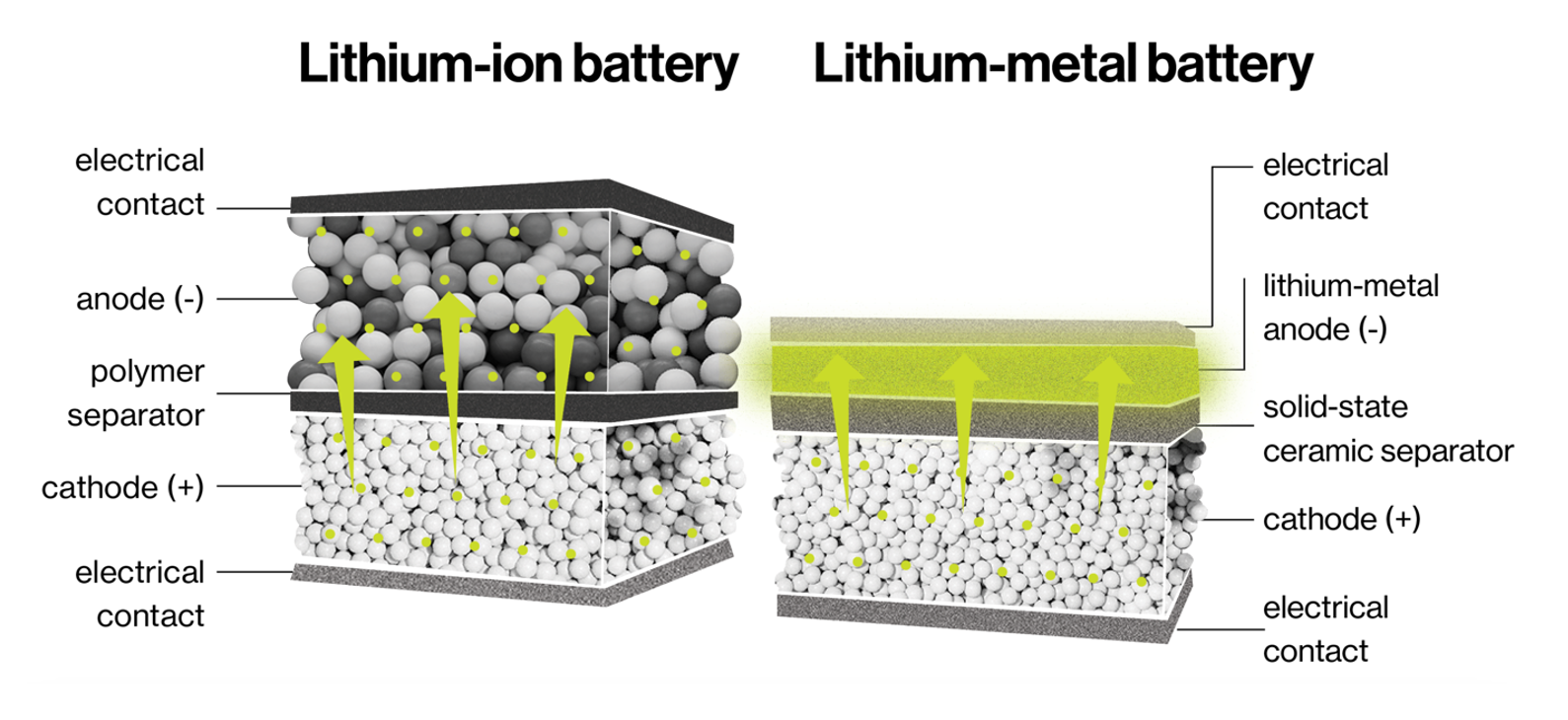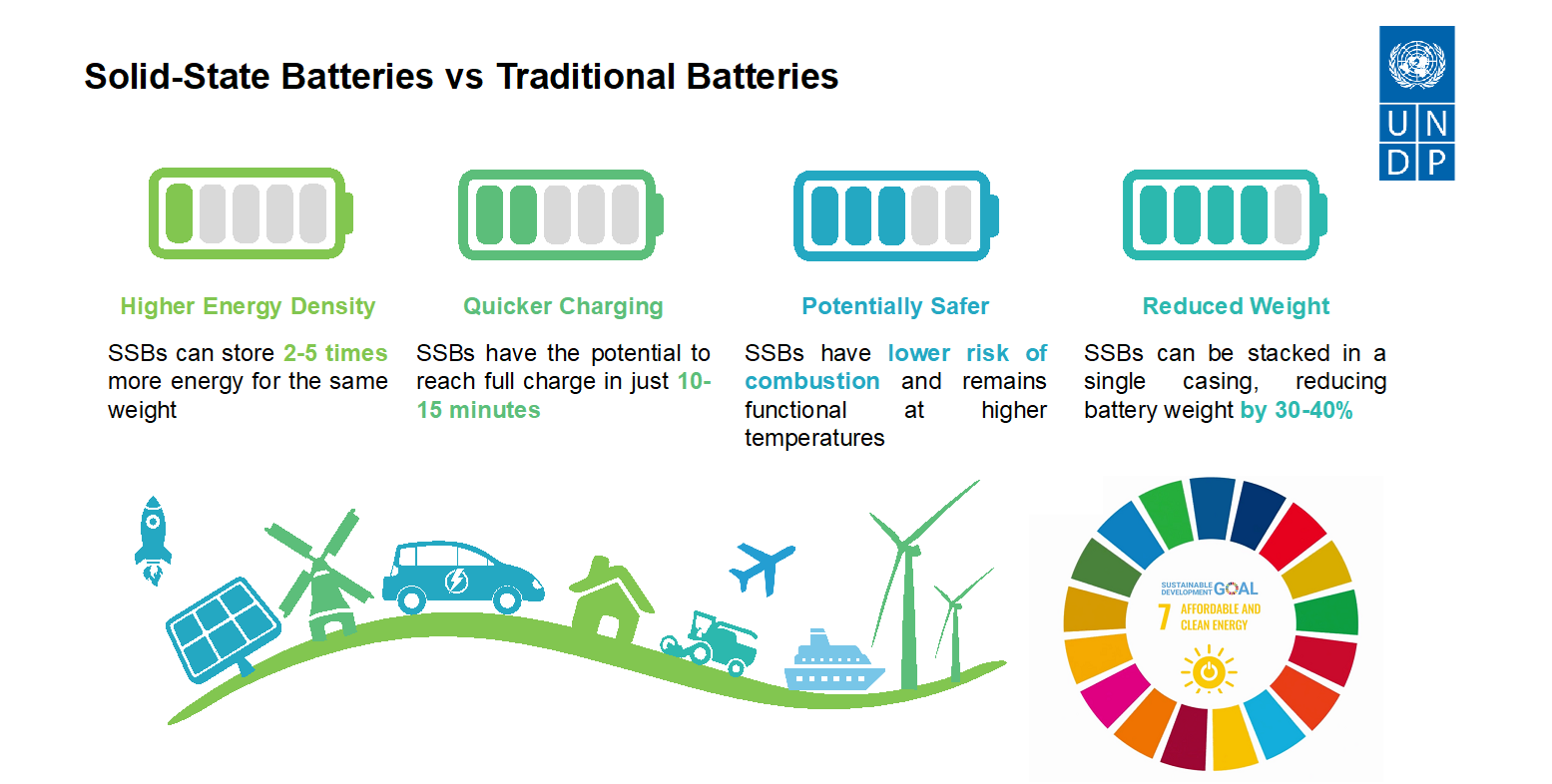Deep Tech Series Vol. 2: Will Solid-State Batteries Power Our Sustainable Tomorrow?
December 13, 2023

Solid-state batteries, with their promise of sustainability and efficiency, could be key in meeting escalating demands and energy goals.
The 'Tracking SDG7: The Energy Progress Report 2023' reveals that, without major advancements, the world will fall short of achieving SDG 7 — universal access to sustainable and modern energy by 2030. Despite renewable energy reaching 19.1% of total consumption in 2020, its deployment needs to accelerate, especially in heat production and transport. The transport sector's heavy reliance on oil, constituting nearly 91% of its energy use and over a third of CO2 emissions from end-use sectors, underscores the need for more sustainable alternatives. Transitioning to battery-electric and hybrid vehicles presents a viable solution, potentially reducing CO2 emissions by over 60 billion tons by 2050. The increasing popularity of electric vehicles (EVs), which constituted 14% of new car sales in 2022 and are projected to take a 35% market share by 2030, signals an imminent surge in battery demand, expected to grow six to tenfold by 2030. Additionally, the minimal energy efficiency improvement of 0.6% in 2021, significantly below the annual 3.4% target required for SDG7, further underscores the need for innovative energy storage technologies. In this context, solid-state batteries, with their promise of sustainability and efficiency, could be key in meeting these escalating demands and energy goals.
Battery Innovations: Paving the Way for Sustainable Energy Storage
Advancements in battery technology are pivotal for the evolution of sustainable energy storage. Since their commercial introduction in the 1990s, lithium-ion batteries have become integral to modern devices from mobile phones to EVs, witnessing a dramatic 97% reduction in cost. Despite their widespread use, lithium-ion batteries pose safety risks due to flammability and overheating from their liquid electrolytes and have limited energy density for larger applications like grid-scale storage and electric aircraft. Solid-state batteries, utilizing non-flammable solid materials like ceramics, sulfur, or selenium as separators, could offer a new prospect for safer and more sustainable energy storage solutions. For instance, the non-flammable nature drastically reduces fire hazards, particularly in densely populated areas or in high-risk applications like aviation. Furthermore, moving towards being cobalt- and nickel-free, their manufacturing process is more sustainable and reduces reliance on scarce materials.

Figure 1: How a solid-state lithium-metal battery works.
In a lithium-ion battery, lithium ions shuttle back and forth between the anode and cathode through a liquid separator as the battery charges and discharges. In a solid-state battery, the ions travel through a solid separator and form a perfectly flat layer between it and the electrical contact, creating the anode when it’s charged. Some lack an anode in its depleted state.
Solid-state battery’s improvements in performance include:
Higher Energy Density: Solid-state batteries may offer 500 watt-hours per kilogram (Wh/kg), significantly surpassing the 120-260 Wh/kg of current lithium-ion batteries, providing up to five times the energy for the same weight.
Potentially Safer: With no flammable liquids, solid-state batteries are safer, functioning even when damaged, and requiring less cooling due to higher temperature tolerance.
Quicker Charging Capability: Solid-state batteries could potentially be charged in just 10-15 minutes, greatly reducing charge times compared to lithium-ion batteries.
Reduced Weight: Their design could allow a 30-40% weight reduction over traditional batteries, improving the efficiency of the devices or vehicles they power.

Figure 2: Comparison between solid-state batteries (SSB) and traditional batteries.
New Batteries for Sustainable Transportation on Land, Sky and Sea
The introduction of solid-state batteries may mark a significant milestone in transportation, steering toward a sustainable electrified future. Electric cars could account for 18% of total car sales globally in 2023, a 35% increase from the previous year. This shift has galvanized diverse innovators, from tech startups and big industrial players to scholars and public transport authorities, to focus on developing new battery technologies. Their joint efforts are accelerating the adoption of electric cars and e-buses, with plans to introduce solid-state battery-powered electric cars as soon as 2027. In public transport, some e-bus providers have already started integrating solid-state batteries into their fleets, promoting sustainable urban mobility. The shift to electric mobility is particularly critical in low- and middle-income countries, which are experiencing rising emissions and where the transition has been slow due to high initial costs. However, studies indicate that the long-term economic, operational, and environmental benefits of EVs outweigh initial expenses.
Beyond road transport, solid-state batteries promise to sustainably power travel in the air and on the water. Electric aircraft, limited by the lower energy density of conventional batteries, require around 800 Wh/kg to get off the ground, a benchmark significantly higher than the current 260 Wh/kg. NASA’s Solid-state Architecture Batteries for Enhanced Rechargability and Safety (SABERS) project is spearheading efforts to develop batteries with double this energy density, potentially transforming not just aviation but also maritime transport. In Krabi, Thailand, for instance, electric boats are emerging as a sustainable option in tourism, while solar-assisted electric vessels are supporting fishing communities in India. Compared to traditional gasoline-powered boats, electric vessels contribute to reducing harmful gas emissions and noise pollution, which are particularly beneficial in sensitive marine environments and for sustainable tourism. The adoption of solid-state batteries could potentially magnify these sustainable transport solutions.
The Potential of Solid-State Batteries in Enhancing Global Renewable Energy Infrastructure
The benefits of solid-state batteries extend beyond transportation, promising enhancements in renewable energy infrastructure and grid-scale storage. Despite significant solar (192GW) and wind power (75GW) installations globally in 2022, added storage systems fell short at just 16GW/35GWh, with the disparity more acute in low- and middle-income countries, where less than 10% of new global battery storage is projected by 2030. Integrating solid-state batteries with renewables could be transformative. They offer 10 to 100 hours of storage, far surpassing the 4-6 hours from traditional batteries, which is especially advantageous for developing countries, where grids often grapple with challenges like poor supply security and underdeveloped infrastructure. Furthermore, their ability to store more energy in a smaller, more durable and secure format could enhance their effectiveness in managing peak loads, especially in areas with extreme weather conditions or unstable grids.
Solid-state battery technology has also ushered in new applications like the world’s first solid-state portable power stations. Thanks to the lightweight and high energy density features of solid-state batteries, these devices are compact and offer versatile power solutions for a wide range of needs. They are rechargeable through portable solar panels, making them exceptionally useful in remote and off-grid scenarios — from remote work and emergencies to rural electrification. This is particularly impactful in development contexts lacking grid access or in disaster-prone areas. In places like rural Uganda, where reliable power is rare, such technology could be transformative for health centers struggling with essential services like vaccine refrigeration and drug storage. The deployment of portable solar generators in these clinics exemplifies how solid-state power stations could potentially meet critical energy needs in remote and underserved regions, significantly contributing to healthcare and emergency preparedness.
Navigating the Challenges
Despite their potential, solid-state batteries face significant technical and market adoption challenges. Key issues include the formation of lithium dendrites, which can cause short circuits and capacity fade, hindering their potential in high-demand applications. Additionally, achieving stable interactions between solid electrolytes and electrodes is complex due to the opacity of solid electrolytes, complicating the analysis of battery operations on a nanoscale. Identifying the most efficient materials and cost-effective production methods remains a challenge. Despite these hurdles, the transition to solid-state batteries in EVs, currently dependent on lithium-ion technology, could be facilitated by repurposing existing lithium-ion battery manufacturing lines. This approach offers benefits without requiring a complete overhaul of existing infrastructure, ensuring a smoother and more cost-effective transition.
The current landscape of battery production raises environmental and social concerns in developing regions. Over half of the world's lithium resources are in the Andean regions, where mining demands vast amounts of groundwater, leading to water scarcity and soil contamination. Similarly, in Africa, home to about 50% of global cobalt reserves, mining conditions are often hazardous. Transitioning to solid-state batteries, evolving to be cobalt- and nickel-free, offers a more sustainable and socially responsible future for battery technology. Concurrently, the industry's evolution must consider its impact on local economies and supply chains. Embracing alternative technologies like sodium-ion and silicon-based anodes could also reduce reliance on raw materials like graphite, leading to more resilient and diverse supply chains. However, this shift also poses risks such as unemployment and economic destabilization in mining-dependent regions. A nuanced approach is required to balance technological progress with sustainable development and equitable resource distribution.
Global Strategies and Collaborations for Battery Innovations
Solid-state battery research and industrialization are advancing globally, with significant developments in both established and emerging economies. In developed countries, substantial funding and strategic initiatives are being channeled into EV and new battery research, manufacturing, and industrialization. Emerging economies like Brazil are pioneering the field with collaborative projects to build their solid-state battery industry. Similarly, India's 2022 Production Linked Incentives (PLI) scheme, with significant investments in domestic manufacturing, also echoes this trend. For developing countries navigating the landscape of advanced battery technology, strategic actions can bolster their growth and sustainability. In addition to research and development investments, these countries could implement specialized education programs to foster local expertise in energy storage innovations, develop policies for integrating these new technologies into national power grids, encourage the localization of battery supply chains by exploring new business models in the recycling sector, and establish North-South partnerships for technology transfer.
The advancement of solid-state technology reflects a global commitment to safer, more efficient, and sustainable energy solutions, marking progress toward achieving SDG 7. These innovative batteries may hold the promise to meet the rising demand for EVs on land, in the air, and at sea, as well as to enhance grid storage capabilities and strengthen the resilience of battery supply chains. The UNDP's initiatives in promoting sustainable energy practices and technologies are integral to this evolution, helping countries in transitioning towards cleaner energy sources. While challenges remain, synergistic efforts among governments, industry players, academics, and consumers are essential for the further advancement and future adoption of battery innovations in transportation, energy grids, and beyond. The ultimate success of innovative energy solutions will be a collective achievement, representing our ability to harness new solutions for a future where energy is not only efficient but sustainably solid.
This is the second blog of the Deep Tech Series. Click here for the full list of blogs.

 Locations
Locations

